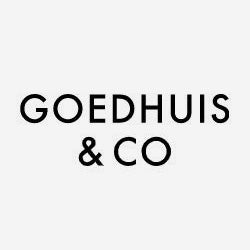
In our world of increasing uncertainty, it is always reassuring to have some constants. One constant is the continuous high quality and outstanding value of Rhône Valley wines. Following on from the 2009 vintage, which produced rich, opulent wines in the south and beautifully delineated, ripe and complex wines in the north, the 2010 vintage created wines of wonderful balance, fruit concentration, structure and freshness across all regions. We feel that they are really impressive and many have even greater potential for long cellaring than the extrovert 2009s. Château de Beaucastel confidently state that their 2010 is the best wine they have produced since 1978 – not a light declaration to make.

The growing season could not have been more ideal. According to Guillaume Gonnet at Font de Michelle, there was snow in winter every month for 3 months, slowly building up the water table for the year ahead. Throughout the valley, rain came in spring when necessary and sun was perfectly interspersed throughout the growing season at just the right time to encourage even ripening. July and August were hot, and estates like Beaucastel recorded 35 days of over 30 °C. However, the growing season provided a balance and the south also experienced 46 days of frost. This large range of temperatures generated a longer growing season. This, in turn, enabled the grapes to ripen slowly, producing more complex aromatics, chiselled structures and lots of freshness. All growers said that their grapes were “˜just perfect’, healthy and evenly ripe.

All of our producers describe their wines as more “˜classic’ than the 2009 vintage. This is to say, they are more restrained than the exuberant, fruit-driven 2009s. The wines generally have more lift and firmness, though some are actually softer and more elegant. Many are “˜vins de garde’ which will need a bit of cellaring before they truly open up. Several producers such as Florent Viale of Domaine de Colombier described this 2009/2010 duo as a modern 1990/1991 (both 5 star vintages in the north), with both 1990 and 2009 being “˜sexy and lush’, and the 1991 and 2010 as “˜brooding, masculine and refined’ – not that different from the past two vintages in Bordeaux, for example. We thoroughly enjoyed a return to a more balanced style in the south, similar to 2006 and 2001 but with increased power and complexity. For the whites, they are similar to 2007s with beautiful, crunchy fruit and an overall sculpted feel.
The only downside to 2010 is the lower quantities. The rain in the spring, which nourished the vines during the beginning of their growth spurt, also disrupted flowering in many areas. So while certain producers are only down by10-15% in quantity, other domaines such as Clusel Roch have produced 30-35% less. Rain was not the sole contributing factor to lower yields, however. Domaine de Trévallon lost 6,000 bottles worth of wine due to a herd of wild boars devouring their way across one of their vineyards a week before harvest. It is an unfortunate experience from which to learn that we (and their dog, Tulipe) are obviously not the only ones who love their grapes. As payback, we have decided to include their recipe for wild boar in the upcoming brochure. Their wine, ironically, beautifully accompanies this tusked and avaricious beast!

The notion of constants carries over to price as well. With Bordeaux prices increasing with no apparent ceiling, the Rhône prices have for the most part remained in line with the last few years. We do not have our final prices yet, but all the indications are that this will remain true this year. Consequently, it looks even better value for the quality, which is particularly important for those that are interested in drinking wine rather than buying for sheer investment.
When we publish our full list in a few weeks, our regular clients will notice that we have decided to include only those reds that are meant to be laid down – whether it is for 3 years or 30. We wanted to to create a more concise, focused list of the very best estates we work with. The less expensive Rhône wines that were previously in our brochure are now found on our drinking list and will be offered upon release rather than en primeur. This is the opportune moment to really create a top-notch Rhône cellar from Côte Rôtie all the way to Châteauneuf du Pape.
So watch this space…

 Written By
Written By